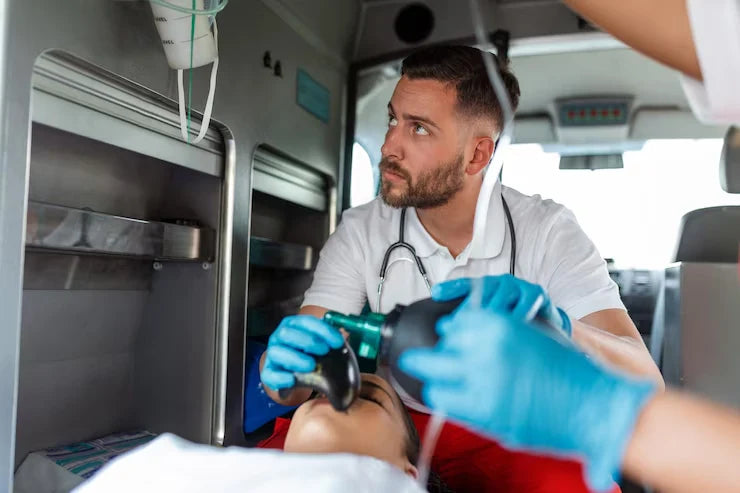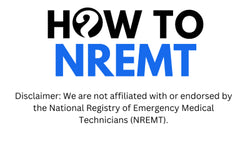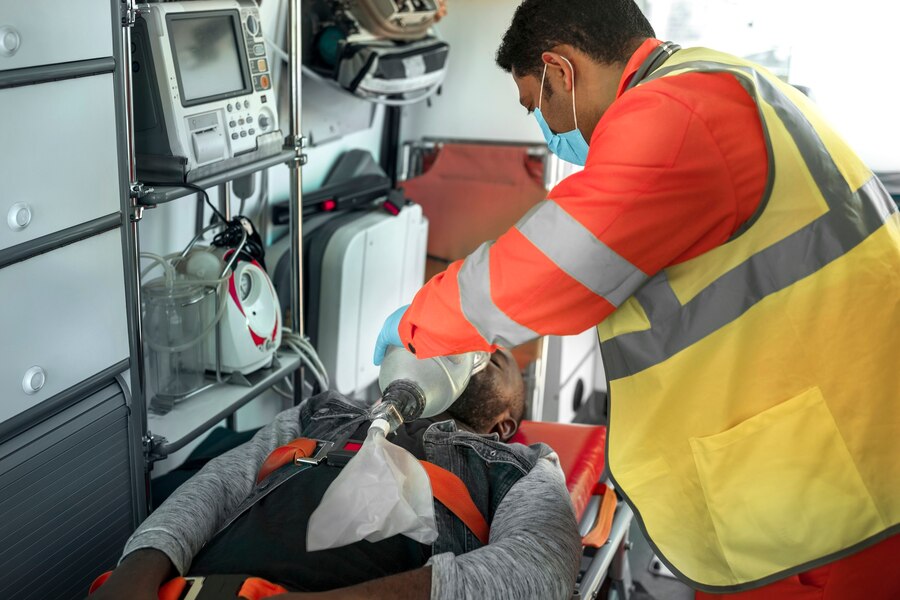If you're preparing to start a career in emergency medical services in Florida, becoming a certified EMT is your first step. Whether you're in Miami, Tampa, Jacksonville, or a rural part of the Panhandle, EMTs in Florida provide essential pre-hospital care during emergencies. This guide explains the Florida EMT certification process for first-time candidates and shows how How To NREMT helps you pass the NREMT cognitive exam with confidence.
Step 01

Meet the Basic Eligibility Requirements
Before diving into training, ensure you meet Florida's baseline criteria for EMT candidates:
- Age: Must be at least 18 years old.
- Education: Possess a high school diploma or GED.
- CPR Certification: Hold a valid CPR certification at the Healthcare Provider level, such as the American Heart Association BLS or equivalent.
- Background Check: Undergo and pass a criminal background check.
- Physical and Mental Fitness: Demonstrate the physical and mental capabilities required to perform EMT duties effectively.
Meeting these prerequisites is the first step toward a successful EMT career in Florida.
Step 02

Enroll in a State-Approved EMT Training Program
Florida mandates that aspiring EMTs complete a state-approved training program. These programs are designed to equip students with the theoretical knowledge and practical skills necessary for emergency medical services.
Key components of these programs include:
- Classroom Instruction: Covering topics like anatomy, physiology, medical terminology, and emergency procedures.
- Hands-On Training: Practical sessions focusing on skills such as airway management, patient assessment, and trauma care.
- Clinical Experience: Real-world exposure through ride-alongs with ambulance services or rotations in emergency departments.
Notable institutions offering EMT training in Florida include:
- Miami Dade College: Offers comprehensive EMS programs, including EMT and Advanced EMT courses.
- Valencia College: Provides both traditional and accelerated EMT programs, accommodating various learning preferences.
Select a program that aligns with your schedule, learning style, and career goals.
Step 03

Prepare for the NREMT Cognitive Exam
Upon completing your EMT training, the next step is to pass the National Registry of Emergency Medical Technicians (NREMT) cognitive exam. This computer-based test assesses your understanding of emergency medical care principles.
The exam dynamically adjusts its difficulty level as you progress, based on how you answer each question. If you consistently answer correctly, you’ll receive harder questions to verify your mastery. This makes the test more precise but also more challenging, especially for first-time test takers who may be unfamiliar with adaptive testing formats.
The updated version of the NREMT EMT cognitive exam, effective April 7, 2025, focuses on five critical domains:
- Scene Size-Up and Safety: Identifying scene hazards, ensuring responder and patient safety
- Primary Assessment: Airway, breathing, circulation, level of consciousness
- Secondary Assessment: History-taking and physical exams
- Patient Treatment and Transport: Clinical interventions and preparing the patient for movement
- Operations: EMS logistics, radio communication, legal and ethical responsibilities
All content areas now have pediatric topics integrated, so expect questions that assess your ability to care for children as well as adults. You’ll be tested on clinical judgment, priority-setting, and scene management skills.
At How To NREMT, we guide you through this format using practice questions that simulate real exam conditions, helping you feel confident and prepared on test day.
Step 04

Apply for Florida EMT Licensure
Once you pass the NREMT cognitive exam, you can apply for state EMT licensure through the Florida Department of Health.
Licensure Application Process
1: Create a Medical Quality Assurance (MQA) Services account on the Florida DOH website
2: Submit proof of:
- EMT course completion
- NREMT cognitive exam results
- CPR certification
- Legal photo identification
Once your application is approved, you’ll be officially licensed to work as an EMT in Florida.
National vs. Florida EMT Certification Requirements
Understanding the distinctions between national and state-specific requirements is essential for aspiring EMTs.
The table below provides a comparative overview:
| Requirement | National (NREMT) | Delaware State |
|---|---|---|
| Age Requirement | 18 years | 18 years |
| High School Diploma/GED | Yes | Yes |
| CPR Certification | Yes | Yes |
| Background Check | Varies by state | Yes |
| Completion of EMT Training | Yes | Yes |
| Cognitive Exam | Yes | Yes |
| Psychomotor Exam | No | May be required |
| State Application | N/A | Yes |
| Continuing Education | Yes | Yes |
Please note: The psychomotor exam is no longer part of the National Registry (NREMT) certification process. Stay informed about any changes in certification requirements by regularly consulting both the NREMT and Delaware's EMS authorities.

- Choosing a selection results in a full page refresh.



